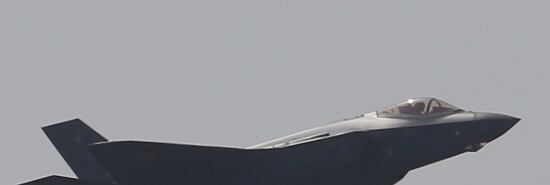
GAO issues scathing report on Lockheed Martin’s F-35 debacle
Tom Rogan
Video Embed
“The F-35 fleet mission capable rate — the percentage of time the aircraft can perform one of its tasked missions — was about 55% in March 2023, far below program goals.”
That line comes from a new Government Accountability Office report that was released on Thursday. The report adds another chapter to the disgraceful tale of the F-35 fighter jet procurement program. That program has cost trillions of dollars, yet the F-35 remains beset by a woeful track record. The GAO report underlines why Lockheed Martin shouldn’t simply be denied the new performance-based logistics contract it seeks, but should be subjected to stringent actions to improve taxpayer value for money and U.S. military readiness.
WHY IS VOLODYMYR ZELENSKY TRYING TO ALIENATE UKRAINE’S ALLIES?
Lockheed wants a PBL contract that would maximize its profits and hopefully smooth out supply issues with subcontractors. But as Audrey Decker reports, the Pentagon is skeptical about an F-35 PBL. Rightly so.
In a peacetime scenario, moving to a PBL contract might make sense for taxpayers and the military. The problem is that Lockheed’s record on the F-35 has been that of repeated failure. It’s a failure to produce on time, at cost, and at warfighting capability. This sad reality has been underlined again by the defense firm’s failure to deliver the latest “Block 4” tech iteration of the F-35. Not only is the Block 4 delivery delayed, it is massively exceeding Lockheed’s cost projections. In turn, the grave risk is that in a war with China, a PBL contract would make shortages of F-35 spare parts even worse than they are today. That is a risk too far.
Lockheed has earned the Heritage Foundation’s strange adoration and pays writers to claim the F-35 is amazing (that’s actually the F-22). But the reality is that the F-35 remains ill-suited to facing overwhelming People’s Liberation Army air, naval, and missile forces over the South and East China Seas (the F-15EX is better suited to this fight). The F-35 program is also very ill-suited to being able to sustain operations during a war with China. The GAO’s new report evinces as much. It notes that officials “at 10 of 15 [F-35] installations stated that a significant day-to-day maintenance challenge for the F-35 was the availability of spare parts.” The GAO found that non-mission capable spare part supply rate in 2022 was about 60% higher than Lockheed had projected.
That’s just the start. A few other gems?
The GAO says that “maintainers at all three installations we visited described access to part numbers as a recurring issue and one that slows down the maintenance process. According to maintainers we spoke to, part numbers reside in a database that is proprietary to the prime contractor. Maintainers do not have access. Not having ready access to part numbers hinders the repair of the aircraft because it delays the ordering and receipt of needed parts. Maintainers at one installation we visited told us that they would not need contractors on the flight line if they simply had access to part numbers. However, since access to part numbers is an issue that can affect readiness of the aircraft, units and squadrons need contractors on a daily basis.” Lockheed and other subcontractors are highly restrictive as to what technical information they share with the Defense Department. Even though, that is, increased sharing would allow for some repairs to be made on a faster and affordable basis. Of course, this secrecy allows contractors to price gouge the government. The GAO found that maintainers were given “poor and inadequate training” by Lockheed, much of which “relied on PowerPoint slides.” The military cannot better prepare its maintainers because Lockheed insists much of the information needed for that preparation is proprietary and cannot be shared. The GAO reports how “Depot officials told us they are in a challenging position — a government entity, but one that must work through and is reliant on the prime contractor and other commercial sub-contractors responsible for maintaining the F-35.”
In response to these findings, the GAO makes a number of important recommendations centering on transferring intellectual property and supply chain authority to the military. The GAO also rightly calls on the various service branches to consider making leadership changes. The top line, however, is clear. As with the Navy’s Littoral Combat Ship disaster, the continuing F-35 debacle is a scandal of political cronyism, inadequate oversight, and pathetic returns on investment. The nation’s taxpayers and warfighting readiness continue to bear the burden for it.
